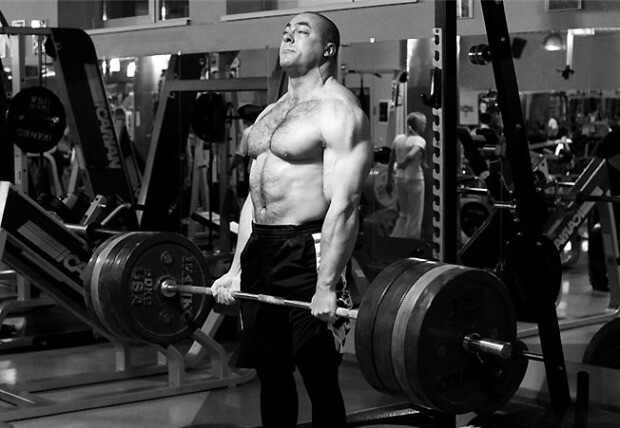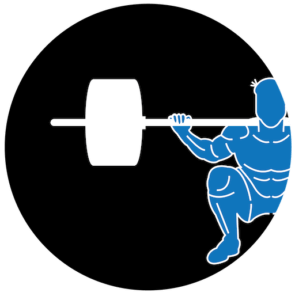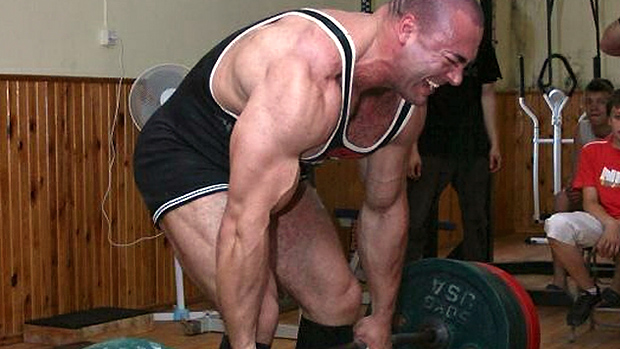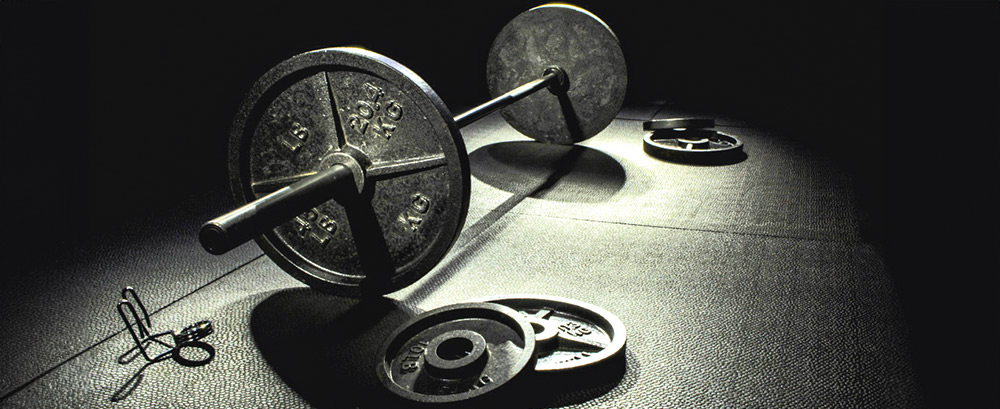Kenny Croxdale
Level 7 Valued Member
Upper Back Rounding in the Conventional "Powerlifting" Deadlift
Below is some additional information of allowing Upper Back Rounding in a Conventional Deadlift.
Why can you lift more weight when you round your back?

 www.strongerbyscience.com
www.strongerbyscience.com
Rounding your back a bit shortens the length of the torso in the sagittal plane. In non-nerd speak, it lets you keep your hips closer to the bar front-to-back so they don’t have to work as hard to lift the same amount of weight. It’s actually very similar to how you can lift more weight in the low bar squat than the high bar squat – dropping the bar a couple inches lower on your back effectively “shortens” your torso so, all other things being equal, it requires less work from your hips to move the same amount of weight.

The numbers assume a lifter is 6 feet tall with average body proportions – 72 inches tall, the torso is about 30% of total body height for the average person, so that gives us 21.6 inches.
With the spine in a neutral position, it’s about 15.3 inches “long” front-to-back. With some (pretty substantial) rounding, that number is decreased to ~11.7 inches. That change in length front-to-back represents a huge decrease in the amount of hip extension torque that would be required to lift any given weight.
Takeaways:
Rounding your back makes the deadlift more mechanically efficient by reducing how much hip extension torque your hamstrings and glutes have to produce in order to lift any given weight.
Upper Back Rounding and COG (Center of Gravity)

 www.t-nation.com
www.t-nation.com
As Dr Bret Contreras, another benefit of Upper Back Rounding in a Conventional "Powerlifting" Deadlift is that it enable a lifter to keep the bar in closer to the Body's Center of Gravity.
Dr Tom McLaughlin's Deadlift COG Researach
McLaughlin, T. "The Biomechanics of Powerlifting: The Deadlift," Powerlifting USA, Jul. 1981, p. 15.
McLaughlin's research determined that the effective load in a Deadlift is increased 25% if the bar swing out an inch rather from the Body's Center of Gravity.
400 lb Deadllift Math Example
Based on McLaughlin's research that means if an individual is performing a 400 lb Deadlift, allowing the bar to drive an inch away for the body would effective increase the bar load to 440 lbs!
Another interesting piece of McLaughlin's research with the Conventional "Powerlifting" Deadlift is also in regard to...
Leg Pressing The Weight Off The Floor
Many individuals are coached in the Deadlift to focus on, "Driving the feet through the floor; in other words, Leg Pressing the weight off the floor.
This method is counter productive for individual who's focus is on performing a Conventional "Powerlifting" Deadlift with the heaviest weight possible.
That because (McLauhlin's Research) the lower back is responsible for breaking the weight off the floor with some assistance from the legs.
A couple of examples in of the differences are....
Konstantinovs Deadlift

 www.strongerbyscience.com
www.strongerbyscience.com
"He has deadlifted 939 in competition, but has said in interviews that he once tried to train his deadlift without letting his spine flex at all, and was unable to pull much over 700 pounds "
Contreras Deadlift

 www.t-nation.com
www.t-nation.com
"With what's deemed "perfect form," characterized by maintenance of the natural lordotic and thoracic spinal curvature with the extension revolving around the hip joints, I'm able to pull 425 pounds. If I allow my back to round considerably, I can pull 565 pounds."
Strong Drive Off The Floor
Conventional "Powerlifting" Deadlifters are traditionally strong in coming off the floor. The sticking point is usually in the knee area.
That due to the fact that they initiate the drive off the floor with their lower back with some assistance from the legs
Slow Off The Floor
The issue with the majority of Conventional Deadlifters who are slower off the floor in the Deadlift is that they are Leg Pressing weight off the floor (Diving The Feet Through The Floor) rather than initiating the drive off the floor with their lower back.
Two Different Conventional Deadlifts
Essentially, there are two different type of Conventional Deadlifts...
1) Olympic Conventional Deadlifts
This method utilize Leg Drive to break the weight off the floor. This method allows Olympic Lifters to correctly position the bar for the Second Pull.
2) Powerlifting Conventional Deadlifts
This method utilizes the lower back to break weight off the floor. Upper Back Rounding ensure bar/weight is kept closer to the Body's Center of Gravity, as well as decreasing the distance the bar need to be pulled.
The Right Tool For The Right Job
These Deadlifts are tools.
Chose the right tool for the right job.
Below is some additional information of allowing Upper Back Rounding in a Conventional Deadlift.
Why can you lift more weight when you round your back?

Everything You Think Is Wrong With Your Deadlift Is Probably Right
Round your back when you deadlift? Here's why doing so makes the lift more mechanically efficient. Bonus: How to know the best deadlift setup for YOU.
Rounding your back a bit shortens the length of the torso in the sagittal plane. In non-nerd speak, it lets you keep your hips closer to the bar front-to-back so they don’t have to work as hard to lift the same amount of weight. It’s actually very similar to how you can lift more weight in the low bar squat than the high bar squat – dropping the bar a couple inches lower on your back effectively “shortens” your torso so, all other things being equal, it requires less work from your hips to move the same amount of weight.

The numbers assume a lifter is 6 feet tall with average body proportions – 72 inches tall, the torso is about 30% of total body height for the average person, so that gives us 21.6 inches.
With the spine in a neutral position, it’s about 15.3 inches “long” front-to-back. With some (pretty substantial) rounding, that number is decreased to ~11.7 inches. That change in length front-to-back represents a huge decrease in the amount of hip extension torque that would be required to lift any given weight.
Takeaways:
Rounding your back makes the deadlift more mechanically efficient by reducing how much hip extension torque your hamstrings and glutes have to produce in order to lift any given weight.
Upper Back Rounding and COG (Center of Gravity)

A Strong Case For the Rounded Back Deadlift
Always pull with a neutral spine. Well, maybe not always. Info here.
As Dr Bret Contreras, another benefit of Upper Back Rounding in a Conventional "Powerlifting" Deadlift is that it enable a lifter to keep the bar in closer to the Body's Center of Gravity.
Dr Tom McLaughlin's Deadlift COG Researach
McLaughlin, T. "The Biomechanics of Powerlifting: The Deadlift," Powerlifting USA, Jul. 1981, p. 15.
McLaughlin's research determined that the effective load in a Deadlift is increased 25% if the bar swing out an inch rather from the Body's Center of Gravity.
400 lb Deadllift Math Example
Based on McLaughlin's research that means if an individual is performing a 400 lb Deadlift, allowing the bar to drive an inch away for the body would effective increase the bar load to 440 lbs!
Another interesting piece of McLaughlin's research with the Conventional "Powerlifting" Deadlift is also in regard to...
Leg Pressing The Weight Off The Floor
Many individuals are coached in the Deadlift to focus on, "Driving the feet through the floor; in other words, Leg Pressing the weight off the floor.
This method is counter productive for individual who's focus is on performing a Conventional "Powerlifting" Deadlift with the heaviest weight possible.
That because (McLauhlin's Research) the lower back is responsible for breaking the weight off the floor with some assistance from the legs.
A couple of examples in of the differences are....
Konstantinovs Deadlift

Everything You Think Is Wrong With Your Deadlift Is Probably Right
Round your back when you deadlift? Here's why doing so makes the lift more mechanically efficient. Bonus: How to know the best deadlift setup for YOU.
"He has deadlifted 939 in competition, but has said in interviews that he once tried to train his deadlift without letting his spine flex at all, and was unable to pull much over 700 pounds "
Contreras Deadlift

A Strong Case For the Rounded Back Deadlift
Always pull with a neutral spine. Well, maybe not always. Info here.
"With what's deemed "perfect form," characterized by maintenance of the natural lordotic and thoracic spinal curvature with the extension revolving around the hip joints, I'm able to pull 425 pounds. If I allow my back to round considerably, I can pull 565 pounds."
Strong Drive Off The Floor
Conventional "Powerlifting" Deadlifters are traditionally strong in coming off the floor. The sticking point is usually in the knee area.
That due to the fact that they initiate the drive off the floor with their lower back with some assistance from the legs
Slow Off The Floor
The issue with the majority of Conventional Deadlifters who are slower off the floor in the Deadlift is that they are Leg Pressing weight off the floor (Diving The Feet Through The Floor) rather than initiating the drive off the floor with their lower back.
Two Different Conventional Deadlifts
Essentially, there are two different type of Conventional Deadlifts...
1) Olympic Conventional Deadlifts
This method utilize Leg Drive to break the weight off the floor. This method allows Olympic Lifters to correctly position the bar for the Second Pull.
2) Powerlifting Conventional Deadlifts
This method utilizes the lower back to break weight off the floor. Upper Back Rounding ensure bar/weight is kept closer to the Body's Center of Gravity, as well as decreasing the distance the bar need to be pulled.
The Right Tool For The Right Job
These Deadlifts are tools.
Chose the right tool for the right job.
Attachments
Last edited:




